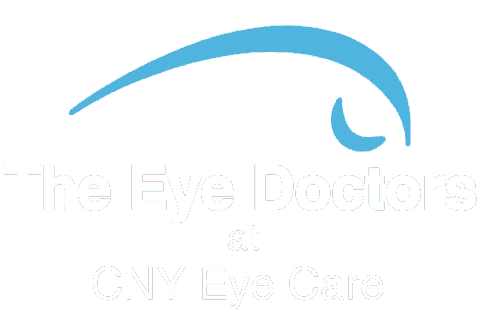Cataract Surgery

One of the most common causes for poor vision as we mature is cataract formation. The clear lens inside our eye gradually becomes harder and less transparent, eventually blocking the passage of light and reducing vision. The symptoms of a cataract vary. Common complaints include difficulty reading and seeing at distance, halos around lights at night while driving, and glare or dazzle noted with bright lights which reduce the ability to identify objects.
When should you have cataract surgery?
The decision to have the cataract removed depends on your needs and activities. Certain individuals desire high quality vision for activities such as golf or driving and feel a mild cataract is bothersome. Others are only mildly bothered by a more advanced cataract and do not feel the need to have anything done. It is essential to understand that cataract surgery is almost always an elective procedure and should be done only if you feel the decreased vision interferes with your ability to work or perform activities which you enjoy. Formerly, the physician would tell the patient when the cataract was “ripe” and needed to be removed. We feel that the decision to have surgery should be shared between the patient and the physician, to be considered after we find that changing your glasses is not helpful and following an extensive discussion of the risks and benefits of the surgery.
Cataract Symptom Checker






What are the complications of cataract surgery?
Improvements in technology have changed cataract surgery enormously. Cataract surgery is one of the most successful and safe operations in medicine. Overall, 98% of cataract surgeries are successful. In fact, cataract surgery is so safe, that patients have a tendency to assume it will go perfectly. Although uncommon, complications can occur either from difficulties during the operation due to the delicate manipulations required inside the eye, from abnormalities within your eye, or from your own individual healing response. In extremely rare situations the vision in the operative eye can be lost completely or a second operation may be necessary to completely remove the cataract or repair the retinal tissue in the back portion of the eye. The most common serious complication occurring in 3% (or more in diabetics) of operations, is called macular edema, where fluid may collect in the central part of the retina and cause distortion and blurring. In most patients this clears over time. A more common sequela of surgery is clouding of the clear membrane (lens capsule) which holds the implant. This is called a secondary cataract or posterior capsular opacity and may happen in weeks, months or years after the operation. It is possible to use a laser to open the capsule and restore vision.
Prior to the procedure, we must have clearance from your family doctor to be sure that you are fit for the operation, and make certain that it will not interfere with any other medical conditions that you may have. We also need to take a measurement of your eye to determine the power of the implant to be placed in the eye.
Lens Implant Options
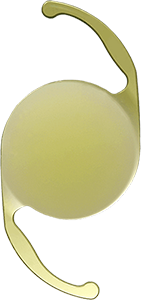
Monofocal (Single Vision)
Monofocal lenses are often referred to as the standard lens because they can correct vision at a single distance. During cataract surgery, this lens is the only one that Medicare will usually cover.
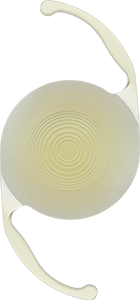
Multifocal (Vision at Multiple Distances)
Multifocal lenses offer a continuous range of sight from distance to intermediate distances. Patients that choose multifocal lenses report fewer visual disturbances like halos.
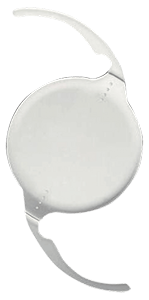
Toric (Astigmatism Correcting)
Toric lenses share some similarities with monofocal lenses, but they are specifically designed to correct astigmatism. This allows patients with astigmatism to see well at a distance or far away.
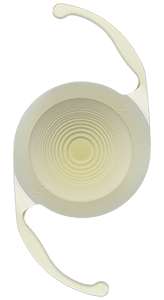
Trifocal (Panoptix, Panoptix Toric)
The trifocal lens provides clear vision up-close, far away, and at intermediate distances. Intermediate tasks include things like shaving, applying makeup, and working on a computer. Up-close tasks include sewing, writing, and reading.
What can I expect, if I have cataract surgery?
With modern technology the procedure is straightforward. It is a one day surgery (in and out in approximately 2 hours) performed in the Specialty Surgery Center, an ambulatory surgery center designed especially for cataract surgery. You will begin to use drops three days prior to the surgery and continue them 3-4 weeks following the surgery. You arrive at the center about one hour prior to the surgery and are prepared by the staff. You are given medications to take the edge off the normal amount of nervousness that accompanies any surgery. The procedure is the most advanced technique with no sutures and takes 10 to 15 minutes if it is uncomplicated. There are no shots or needles necessary, just drops, so a patch is not required after the operation in most cases. After the surgery you are taken to the recovery area where you have something to eat and then you can leave in approximately one hour. The vision will probably be blurred immediately after the operation, but generally will begin to clear slowly later that evening or the following day with the best vision obtained within several days to one month. It is common to note halos around lights or a red tint to objects particularly in bright light for a day or two after the surgery. If you are not allergic to sulfa, you may need to take a pill the evening of the surgery and the next morning. It is required that you be driven to the surgery and we also suggest that you be driven to the office the next day for your one day check. It is usually possible to return to work or to your normal activities within a day or two after your surgery.
What is the follow up for surgery?

You will be seen one week after surgery and again at one month and three months. You will use drops four times a day for the first week and then taper them so that by one month you are usually finished with them. We advise all patients to wear a shield over the eye for the first week to prevent inadvertently rubbing your eye while asleep.
After approximately one month we will measure your eye to determine the change in your glasses necessary to obtain best vision. Many patients will be able to perform some activities without glasses but may still need them for driving, watching television or for fine acuity at distance. The implant is not a bifocal, so most patients require reading glasses for fine print or extended periods of reading.
If you are interested in cataract surgery, let us know and our surgical coordinator will contact you to make arrangements at your convenience.
We hope this information has been helpful. We would like to take this opportunity to thank you for the trust and confidence you have placed in us and our staff. We will do everything in our power to reward that trust as we work toward solutions to present and future problems you may have with your eyes. Thank you.
Do you think your vision is impaired by Cataracts?
Take our online Cataract Self Test to find out if you can benefit from Cataract Surgery.
